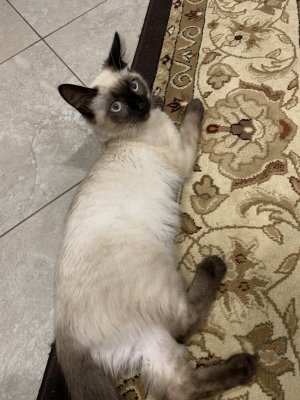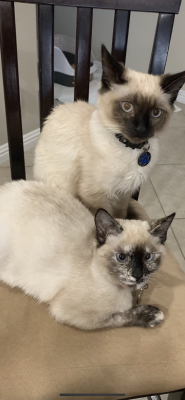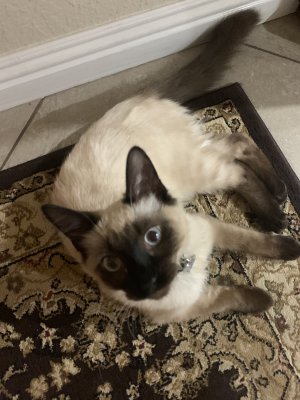- Joined
- Jan 7, 2020
- Messages
- 1
- Purraise
- 1
Hello all,
This is Boo, my 4 month old kitty. I’ve thought Boo was a Himalayan for some time (since that’s what the adoption center thought), however I can’t seem to believe that since from what I have seen, Himalayans usually have the face of a Persian cat. Later I discovered the Ragdoll/Siamese mix and thought he was that. Just today, however, I just found out about the Seal Point Burmese which I have found he looks closest to.
P.S. he has two siblings, one Siamese and one calico (so I’m really confused). To break it down: What do you think he is from looking at his photos?
1. Himalayan
2. Ragdoll/Siamese
3. Seal point Burmese



This is Boo, my 4 month old kitty. I’ve thought Boo was a Himalayan for some time (since that’s what the adoption center thought), however I can’t seem to believe that since from what I have seen, Himalayans usually have the face of a Persian cat. Later I discovered the Ragdoll/Siamese mix and thought he was that. Just today, however, I just found out about the Seal Point Burmese which I have found he looks closest to.
P.S. he has two siblings, one Siamese and one calico (so I’m really confused). To break it down: What do you think he is from looking at his photos?
1. Himalayan
2. Ragdoll/Siamese
3. Seal point Burmese




 Technically he is a DMH seal point.
Technically he is a DMH seal point.
